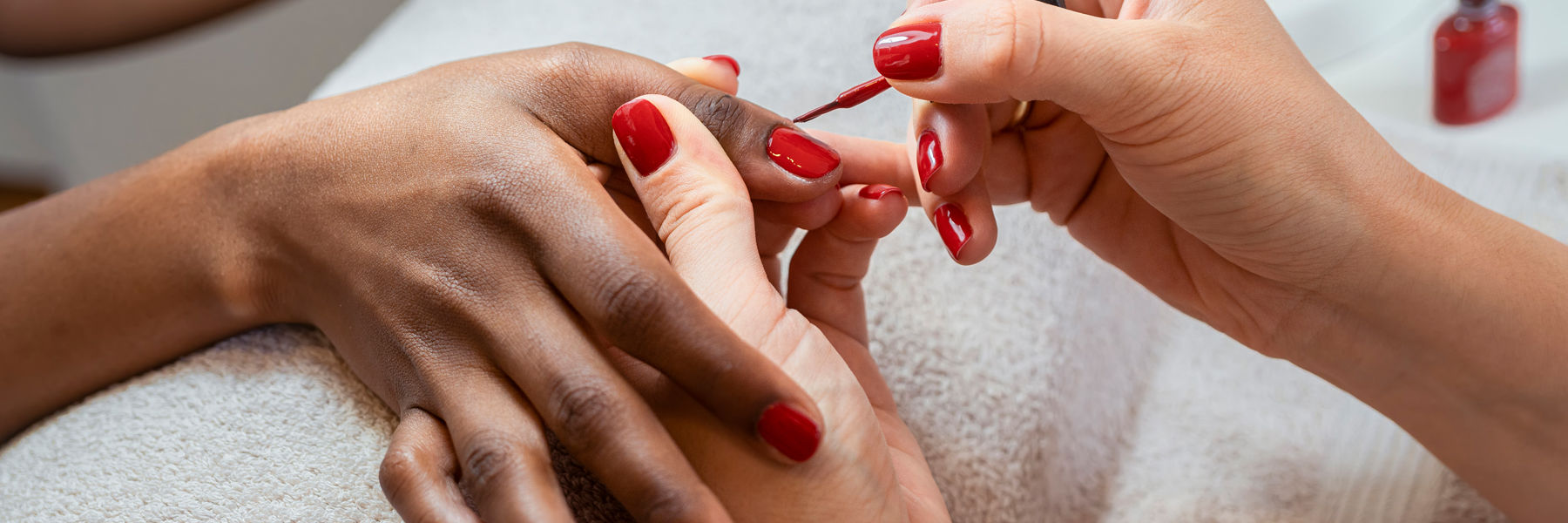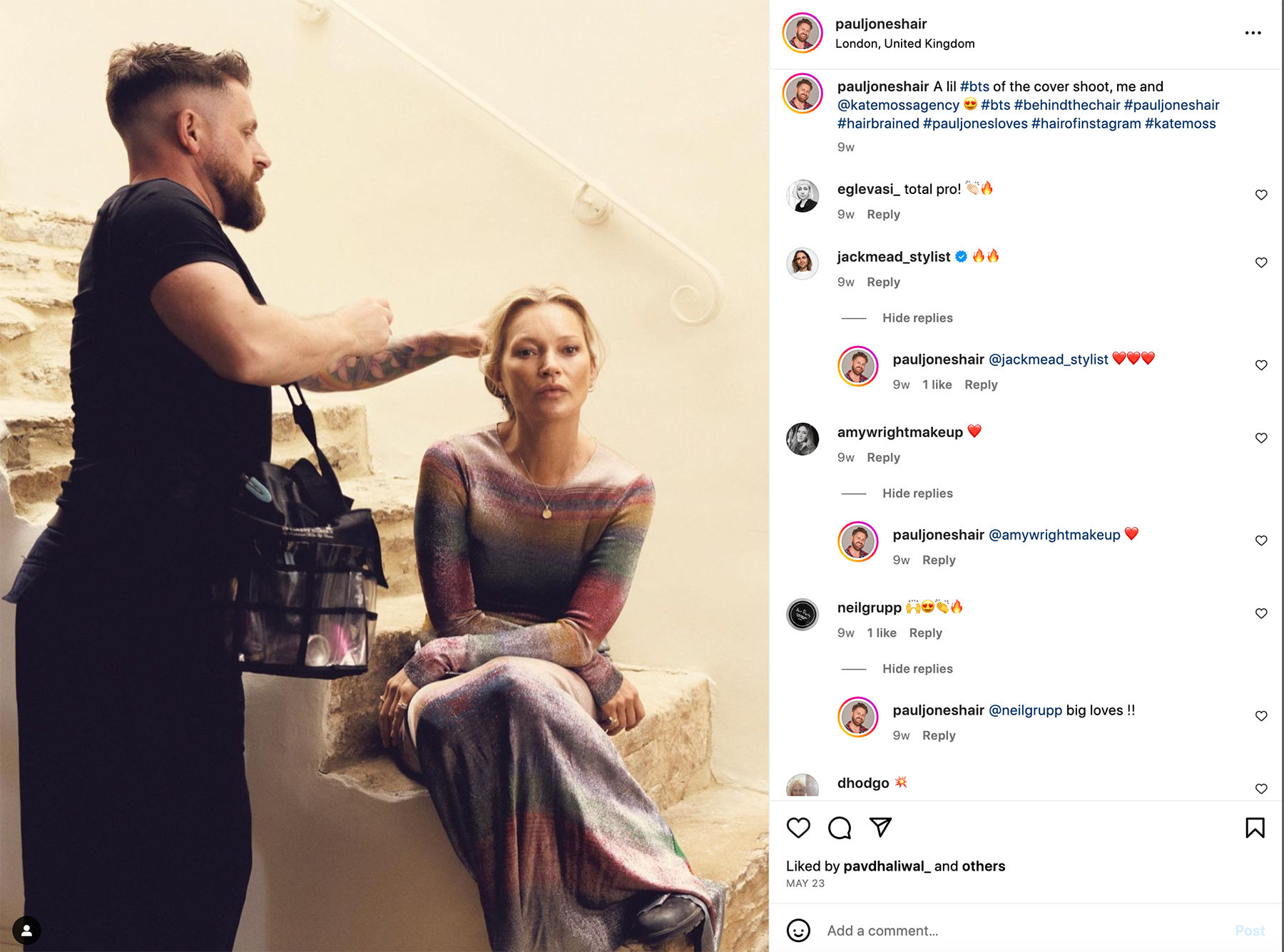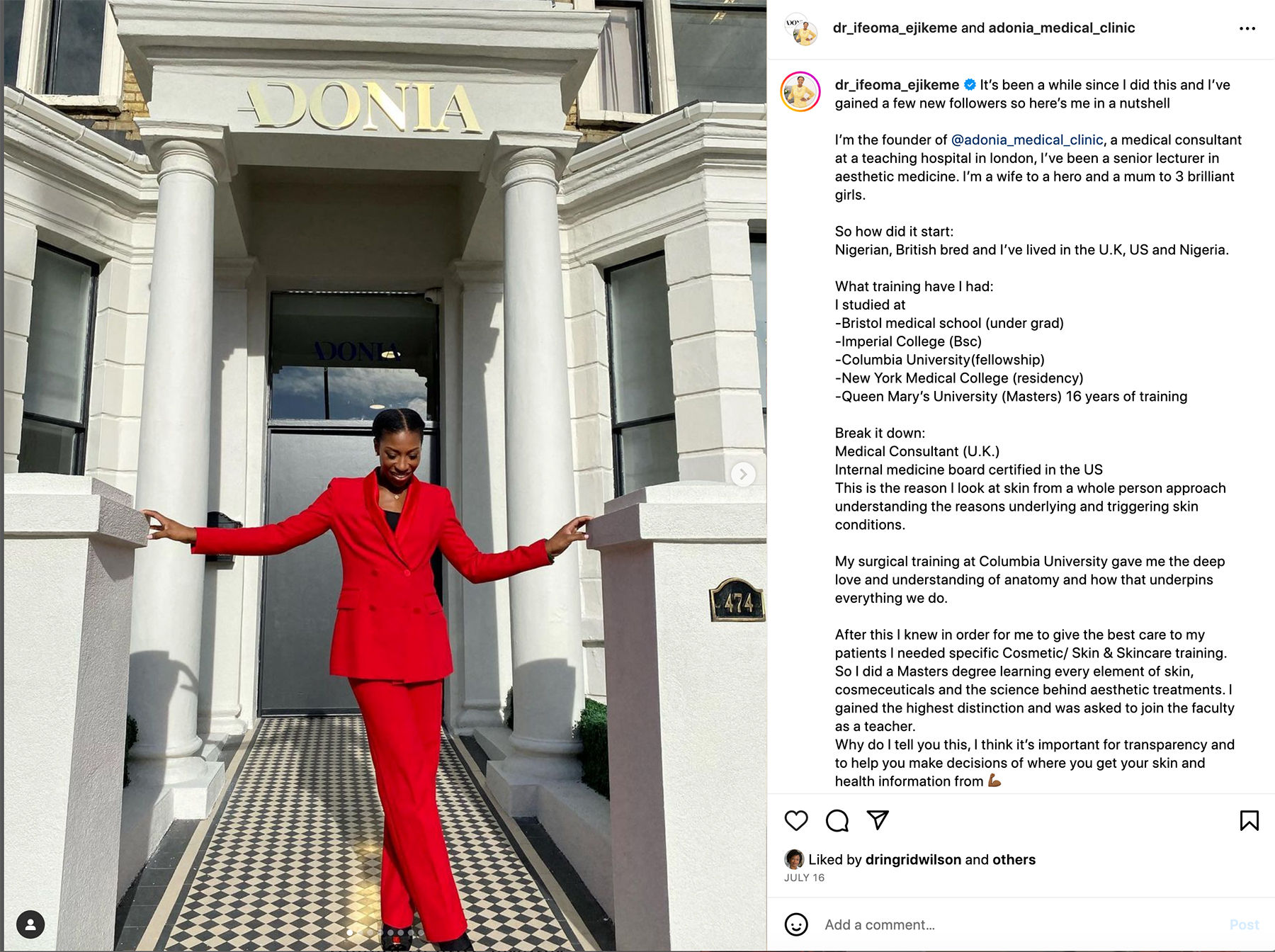Use arrow keys to navigate through the menu items. Use Tab key to navigate through the menu banners.
Pregnancy Beauty Treatments

Pregnancy Beauty Treatments
From manicures to massages, we’ve asked the experts to share their insights
If there's anyone who deserves a good old pamper, it’s mums-to-be! But it’s not always clear which beauty treatments are safe during pregnancy.
Should you ditch your hair dye and swerve your spray tan for the next 9 months?
We’ve asked 4 experts for the lowdown.
(Whatever the treatment, always let the salon know that you are pregnant, so they can take any necessary precautions.)
Is it safe to… get a manicure?
Your exposure to chemicals in nail glues and polishes during a manicure or pedicure is minimal, so nail treatments are generally considered safe during pregnancy – but there are some things to bear in mind.
In the salon
“Acrylic treatments have a strong smell which could make you a little nauseous, so I would recommend avoiding them while you’re expecting, especially during the first trimester,” says nail technician and founder of The Gel Club, Chloe Corbishley-Bull.
“Instead, I’d go for either a regular manicure using normal polish, or a builder (BIAB) or gel polish treatment which are gentler than acrylics. I recommend steering clear of polishes with strong chemicals such as formaldehyde, phthalates and toluene. If you’re in a salon, make sure it’s well ventilated.”
At home
“If you're doing your nails at home, sit by an open window. Try to pick nail polishes that are water-based and have a non-toxic formula. When removing your polish, it’s best to use an acetone-free formula,” says Chloe.
Is it safe to… fake tan?
Self-tan creams are generally considered pregnancy safe. The active ingredient in self-tan is dihydroxyacetone (DHA) which reacts with skin cells to produce a brown pigment. The self-tanners sit on the surface of the skin and aren’t absorbed into the bloodstream.
In the salon
In-salon spray tans are best avoided until baby has arrived, as the effects of accidentally inhaling the tanning spray are unknown.
But don’t be tempted to switch to sun beds. Your skin is more sensitive during pregnancy which makes it more likely to burn, and you may develop dark patches on your skin called melasma. UV rays can also break down folic acid, needed by your unborn baby.
At home
Steer clear of self-tanning sprays and mists. Instant tans, tanning mousses, lotions and drops are fine as you won’t be at risk of inhaling any spray. Pregnancy hormones can increase sensitivities though, so do a patch test on a small area of skin to make sure you don't have an allergic reaction or develop irritation.
Is it safe to… dye your hair?
Good news – you don’t have to cancel your colourist or ditch your home hair dye. Although research suggests that very high doses of the chemicals found in hair dye can be harmful, because the amount and exposure is very low when colouring your hair, it’s considered safe during pregnancy.
In the salon
“Hormones change during pregnancy and intolerances can occur, so I would highly recommend a patch test, even if you’ve had one before conceiving, to double check for allergic reactions or irritation,” explains celebrity hair stylist Paul Jones.
He also recommends opting for highlights or lowlights instead of a full head of colour. “Highlighting hair, by putting the dye only on to the strands of hair, also reduces risk as the chemicals used are only absorbed by your hair and not by your scalp or bloodstream.”

At home
As long as you don’t have an irritated scalp, you can use box dye at home during pregnancy. However, we’d suggest strictly following the instructions on the box and taking a few precautions.
Avoid applying dye to your scalp and leave the dye on for the minimum (not the maximum) amount of time advised on the box. Wear gloves when applying, wash your skin where it's been touched by the dye, and open all the windows so the room is well ventilated.
Swapping your shampoo for a colour-boosting product is a great pregnancy-safe option. “I’m a huge fan of colour-depositing masks during pregnancy as they look after the condition of your hair and freshen up your colour without harming you or baby,” adds Paul.
“If your hair starts to look brassy or dull, use a colour shampoo. I always recommend two shampoo applications – leave the second shampoo on for 5 minutes max.”
Is it safe to… have a facial or massage?
Always tell your therapist that you’re pregnant beforehand. Some essential oils, including sage and rosemary, are a no-no during pregnancy. That’s because of their link to complications such as uterine contractions, and because there’s very little research on how they can affect foetus development.
Although some such as ylang-ylang and lavender can be re-introduced in the second or third trimester, your therapist will likely use non-fragranced natural oils instead which are safe for you and baby.
In the salon
“It’s generally beneficial for pregnant women to have a massage as it helps to relax the body and release endorphins,” explains holistic massage therapist and founder of The Massage Space, Thaisa Uchoas.
“Although there’s little research linking massage to miscarriage, best practice is to avoid treatments during the first trimester and to wait until the second or third when the risk of miscarriage is much lower. And always choose a massage specially designed for pregnancy as the treatment will be adapted for your body.”
“I’ll place pillows to support the bump and knees, use non-fragranced oils such as grapeseed oil or sweet almond oil and administer light pressure.”
Likewise, “having an in-clinic facial during pregnancy can be safe if certain precautions are taken,” says Dr Ifeoma Ejikeme, aesthetic doctor and founder of the Adonia Medical Clinic.

“It's important to inform your aesthetician about your pregnancy so that they can adapt the treatment accordingly. Some may have the correct type of bed and products to create facials safe for pregnancy while others may not.”
“Certain facial ingredients are not safe for pregnancy and will be avoided by your aesthetician,” she adds. For example, if salicylic acid is absorbed, there’s a risk it can affect the placenta and cause a toxicity called salicylism which has adverse effects.
Hydroquinone and retinol are also best avoided as they are both readily absorbed by the body – the latter can contribute to vitamin A toxicity which can also harm baby.
“Instead, pregnancy facials are often built around gentle and hydrating options using ingredients like hyaluronic acid and aloe vera, which are well tolerated,” Dr Ejikeme adds.
At home
Master of 10-step skincare? Just as the salon won’t use certain ingredients, “it’s advisable to avoid skincare ingredients at home that have limited safety data during pregnancy,” explains Dr Ejikeme.
“As mentioned, these include retinoids and salicylic acid. Instead, build your routine around gentle ingredients that carry fewer risks,” she adds. These include coco butter, peptides and hyaluronic acid which are hydrating, gentle and less absorbed by the body.”
Is it safe to… remove body hair?
As skin is more sensitive during pregnancy, you might want to take a gentler approach to hair removal.
In the salon
“Individual preferences and sensitivities can vary during pregnancy. Waxing is generally safe but hormonal changes and extra blood flow can increase your sensitivity to pain. Laser hair removal is strictly off-limits during pregnancy because of the lack of safety data,” says Dr Ejikeme.
At home
Hair removal creams are considered safe, but they may irritate your skin now you're pregnant. Look for creams suitable for sensitive skin and follow instructions carefully, ensuring you always test the product on a small patch of skin first.
Shaving with an electronic or disposable razor is a great option and can be a saviour during pregnancy as it’s quick, easy and fuss-free. Use shaving foam to reduce redness, in-grown hair and irritation.
Help & Customer service
- Help Centre
- How to shop
- Product recalls
Payment Methodslist with 8 items
- Asda Group of Companies
- Modern Slavery Statement
- Electrical Waste Recycling
- Terms & Conditions
- Customer Review Policy
- Privacy Centre
- Cookie Settings
- Accessibility
© ASDA 2025